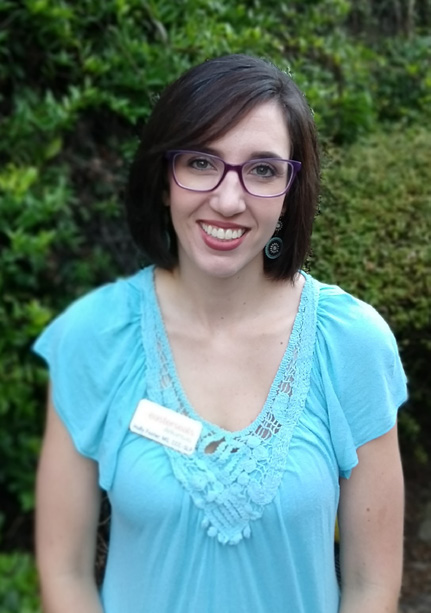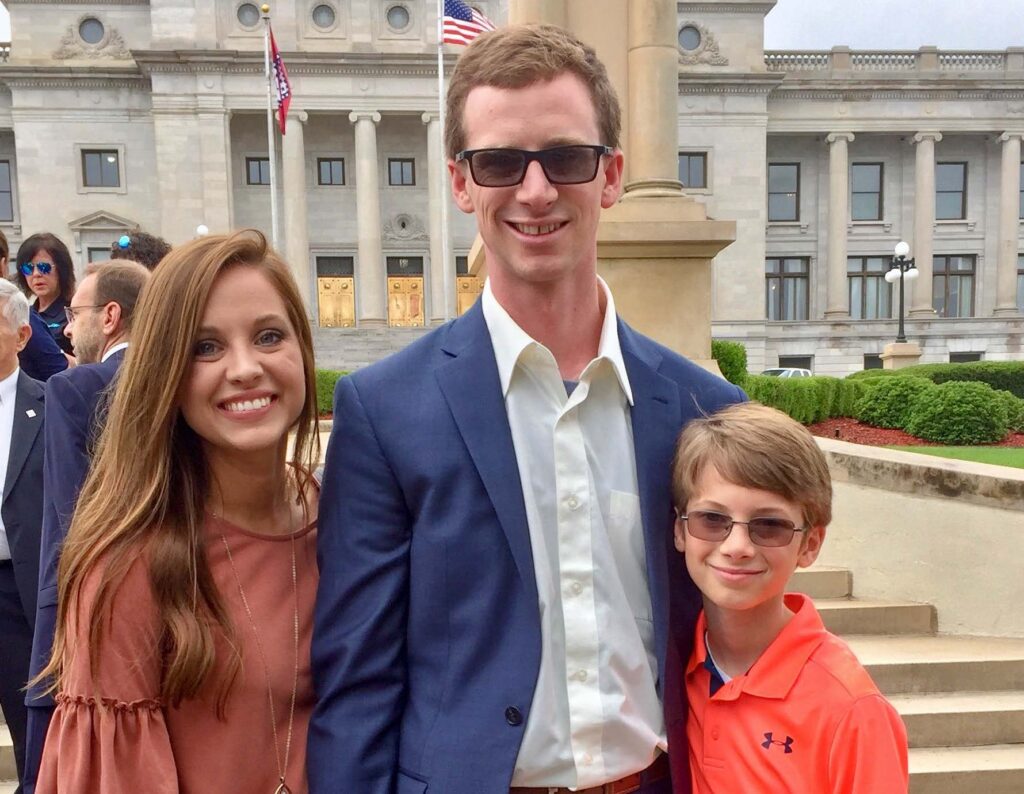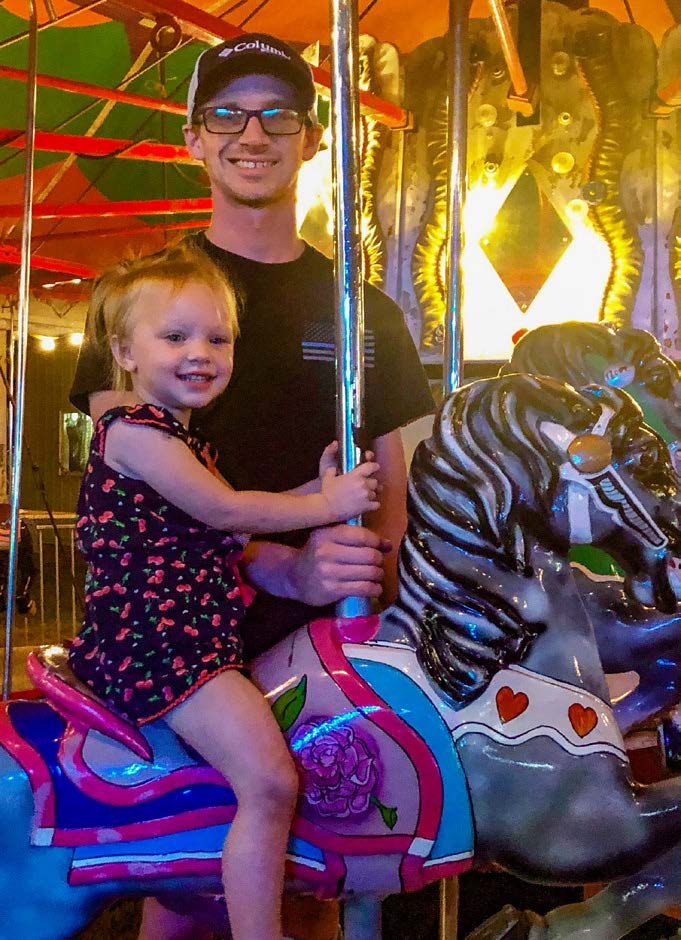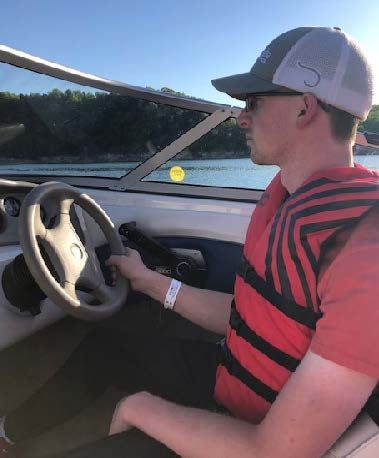Ask the Specialist: Nutrition after Brain Injury
By: Holly D. Foster, MS, CCC-SLP, CBIS; Speech-Language Pathologist and Certified Brain Injury Specialist

Nutrition is always an important part of being healthy, especially if you have had a brain injury. You can help your brain recover by eating a healthy, balanced diet with a lot of different vitamins and minerals.
Remember the basics of a healthy diet:
- Eat a variety of vegetables, fruits, and grains.
- Eat lean meats, poultry, fish, beans, and low-fat dairy products.
- Drink plenty of water.
- Limit the amount of salt, sugar, alcohol, saturated fat, and trans-fat in your diet.
Each vitamin and mineral found in the foods you eat has a purpose for your brain health. Here are some of the most important ones:
- Vitamin B-1 helps with energy and muscle strength (found in grains, nuts, and legumes).
- Vitamin B-12 protects your nerve cells (found in milk, meat, and eggs).
- Vitamin A helps fight infection. It also helps repair tissue in the body (found in meats, fish, carrots, eggs, spinach, and squash).
- Vitamin E gives oxygen to the brain (found in green leafy vegetables and some cereals).
So remember…your brain is what you eat!
References and further reading:
Nutrition and Mental Health- Nutrition and the Brain:
http://www.minddisorders.com/Kau-Nu/Nutrition-and-mental-health.html
Nutrition Australia- Nutrition In and Out: http://www.nutritionaustralia.org/national/resource/balancing-energy-and-out
Medline Plus- Nutrition: Medline Plus: http://www.nlm.nih.gov/medlineplus/nutrition.html
Want to suggest a topic? Email us at braininjury@uams.edu.
Stories from the TBI Community: Tony Thornton Story
As Told to Kimberly Lamb
I was left with drums that I could not play and a dirt bike that I could not ride. The biggest thing is figuring out who I am now.
Tony Thornton

On May 13, 2018, Tony was on his way home from an overtime shift as a flight paramedic for the Air Evac Lifeteam, when he was hit head-on at 60 mph by a young man who had fallen asleep while driving. As the call went out for help, the crew that had just relieved him on the job arrived on the accident scene. Both the driver and passenger in the other vehicle died on impact, but Tony, barely clinging to life, was flown to Cox South Hospital in Springfield, Missouri.
Through no fault of his own, he had suffered extensive injuries, including a moderate diffuse axonal brain injury (injury that results from the brain rapidly accelerating and decelerating inside the skull), four major strokes on the right side of his brain, severe abdominal trauma, broken ribs, extensive spinal and facial fractures, and seizures. Tony was unresponsive for nine days, but he survived.
Tony’s wife, Nicole, knew something was wrong when the program director at Tony’s home base came to her home at 9:30 a.m. Nicole said, “My immediate thought was the helicopter crashed, and by the look on her face, I would have believed that.” Nicole learned of Tony’s accident, and she understood that he might not live.
After contacting immediate family, she began what she calls, “the longest two-hour road trip of my life.” Nicole said, “When I saw him, I instantly felt relief. Even though he was badly hurt his face was still his, he looked just like ‘my Tony’— just asleep with every wire, tube, needle, and cord you could imagine sticking somewhere in his body.”
Tony stayed in the neuro trauma ICU at Cox South Hospital for three weeks. After seven days, they lifted his sedation to see if he would wake up. He did not. At day nine, they discovered he was having seizures and promptly put him on multiple seizure medications. That day, his eyes finally opened for a few seconds, and days later, Tony gave his nurse a thumbs up, a hand squeeze, and moved his toes.
Nicole said, “Approaching the second week, his neurologist encouraged me to begin working on securing him a spot at a neuro rehab. We found that our insurance would cover what he described as the leader in brain rehab and recovery, Craig Hospital in Denver.”
During his first days at Craig, Tony was fitted for a wheelchair, began eating modified meals, and started physical, occupational, and speech therapies. He also saw a neuropsychologist every day. Damage to his larynx meant he could not speak, and he had limited hearing in his left ear and vision problems in his left eye. After three months at Craig Hospital, Tony was transferred to Pate Rehabilitation in Dallas, which specializes in brain injury treatment. Because she needed to return to work and their son needed to get back to school, Nicole returned to Arkansas. During his three months at Pate, Tony added vocational therapy and driver rehabilitation to his routine. He focused on developing goals and regaining his independence.
On Nov. 6 at the age of 26, after a life-changing accident and six months of rehabilitation, Tony returned home, where he was once a flight paramedic and only two semesters away from completing his nursing degree. Now, after the accident, he no longer held a paramedic license and was unable to return to his job. He had to redefine his life.
Tony said, “Things have changed. I had this life where I was healthy. I ran, did sit-ups, pull-ups, and push-ups. I was a driven person. I was a drummer, rode dirt bikes and motorcycles. After the accident, I was left with drums that I could not play, and a dirt bike that I could not ride. The biggest thing is figuring out who I am now.”

Nicole said, “When he came home, I expected he would be able to fit right back into our life as normal. However, he was extremely depressed. He was young, loved his job and providing for his family, and before his accident had many friends and hobbies – riding dirt bikes, riding bicycles, fishing, drumming, boating, riding four wheelers, hiking, etc. He felt hopeless, he felt like a burden, he felt like he no longer had a place in this world. I am a teacher and work throughout the week, our son was in school, and our daughter went to the babysitter (he used to keep her when he was off work at home, but he could no longer care for her by himself). He was home day after day with what he felt was ‘no purpose.’ He became suicidal, and we struggled for months to keep him built up and encouraged. We saw doctors and got his medications adjusted, which we found out were actually causing more problems than helping.” By February, Tony was in a good place.
In a presentation in August at the Arkansas Emergency Medical Services Conference, Tony and members of the rescue flight crew talked about the accident. Tony shared about depression after a traumatic event. He said, “Depression is about loss of your past life. In the blink of an eye, it’s gone. I went from being independent and doing what I wanted to do to being a burden. Everyone is a burden in rehab. At home, you are the person who is sick and frustrated with the physical limitations.”
A key factor in his recovery process has been a strong support system – his wife, Nicole; his two children, his parents, and the medical professionals who have cared for him. From the moment of the accident, Nicole has been Tony’s
strongest advocate.
Together since junior high school, a Facebook post from July 20, 2019, expresses Nicole’s feelings best: “When I almost lost you, I felt physical pain thinking of life without you.
It felt like someone literally broke my heart. I couldn’t catch my breath, like someone knocked the wind out of me. That experience, as horrible as it was, made me realize how blessed we both are to have loved each other so fiercely from such a young age. Thanks for growing up with me, being the calm to my storm, and giving me my two beautiful children. I love you forever.”
Today, Tony is taking college courses, has regained his paramedic license, his driver’s license, and will begin working part-time with the community paramedic program at Baxter Regional Medical Center in Mountain Home. He shared his story with others living with TBI at regional brain injury workshops. He is also helping to develop a virtual support group for people living with brain injury. He is driven by dreams and goals, and he has a list of incredible accomplishments to prove it.

Nicole said, “He now drives RC boats, began photography, flies drones, and still will go hiking, just much milder trails. Thankfully, his personality remained intact. He is still very much the outgoing, funny, smart mand I married. He does struggle with his memory and dealing with stress, but he has come a long way in the short time since his major accident.”
Tony’s Recovery Tips:
- Celebrate the good moments, no matter how small
- Be persistent, set goals, and don’t give up
- Focus on small steps; recovery is not a sprint
Nicole’s Advice to Caregivers:
Find someone outside of your circle who can listen without offering advice or having personal feelings about your situation. Whether a counselor, a neutral friend, or someone else. For me, this was two friends at work.
Want to share your story? Email us at braininjury@uams.edu.
Social Security Disability Pointers: Medicare, A Simple Explanation
By Phylis Dills Social Security Public Affairs Specialist Little Rock
Social Security and Medicare are both programs that are household names, but do you know the true difference? Both programs help safeguard millions of Americans as well as improve the quality of life for their family and friends.
While Social Security offers retirement, disability, and survivors benefits, Medicare provides health insurance.
Medicare is our country’s health insurance program for two groups: people age 65 or older and people under 65 who receive Social Security disability benefits. The program helps with the cost of health care, but it doesn’t cover all medical expenses or the cost of most long-term care.
When you first enroll in Medicare (and during certain times of the year), you can choose how you get your Medicare coverage. There are two main ways to get Medicare:
Original Medicare
Original Medicare includes Medicare Part A (Hospital Insurance) and Part B (Medical Insurance). If you want drug coverage, you can join a separate Part D plan. To help pay your out-of-pocket costs in Original Medicare (like your deductible and 20% coinsurance), you can also shop for and buy supplemental coverage. Examples include coverage from a Medicare Supplement Insurance (Medigap) policy, or from a former employer or union.
Medicare Advantage (also known as Part C)
Medicare Advantage is an “all in one” alternative to Original Medicare. These “bundled” plans include Part A, Part B, and usually Part D. Part C plans may have lower out-ofpocket costs than Original Medicare. They also may offer extra benefits that Original Medicare doesn’t cover — like vision, hearing, dental, and more.
If you can’t afford to pay your Medicare premiums and other medical costs, you may be able to get help from your state. States offer programs for people eligible for or entitled to Medicare who have low income. Some programs may pay for Medicare premiums and some pay Medicare deductibles and coinsurance. To qualify, you must have limited income and resources.
You can learn more about Medicare, including how to apply for Medicare and get a replacement Medicare card, at www.socialsecurity.gov/benefits/medicare.
Please be aware that past newsletter issues may contain outdated information. For the latest updates on resources and events, visit our website or contact us at braininjury@uams.edu with any questions.
